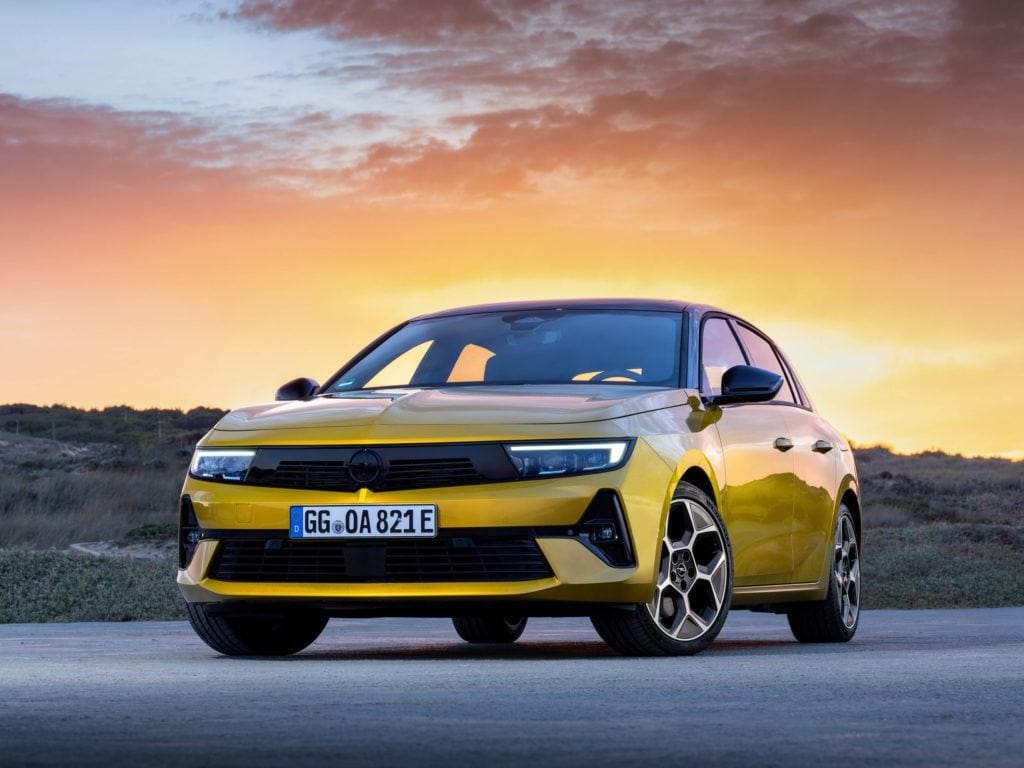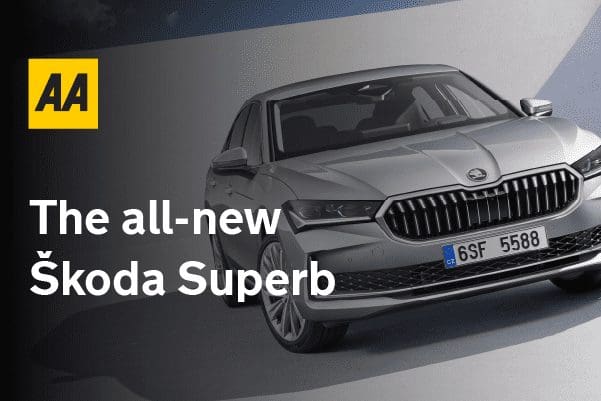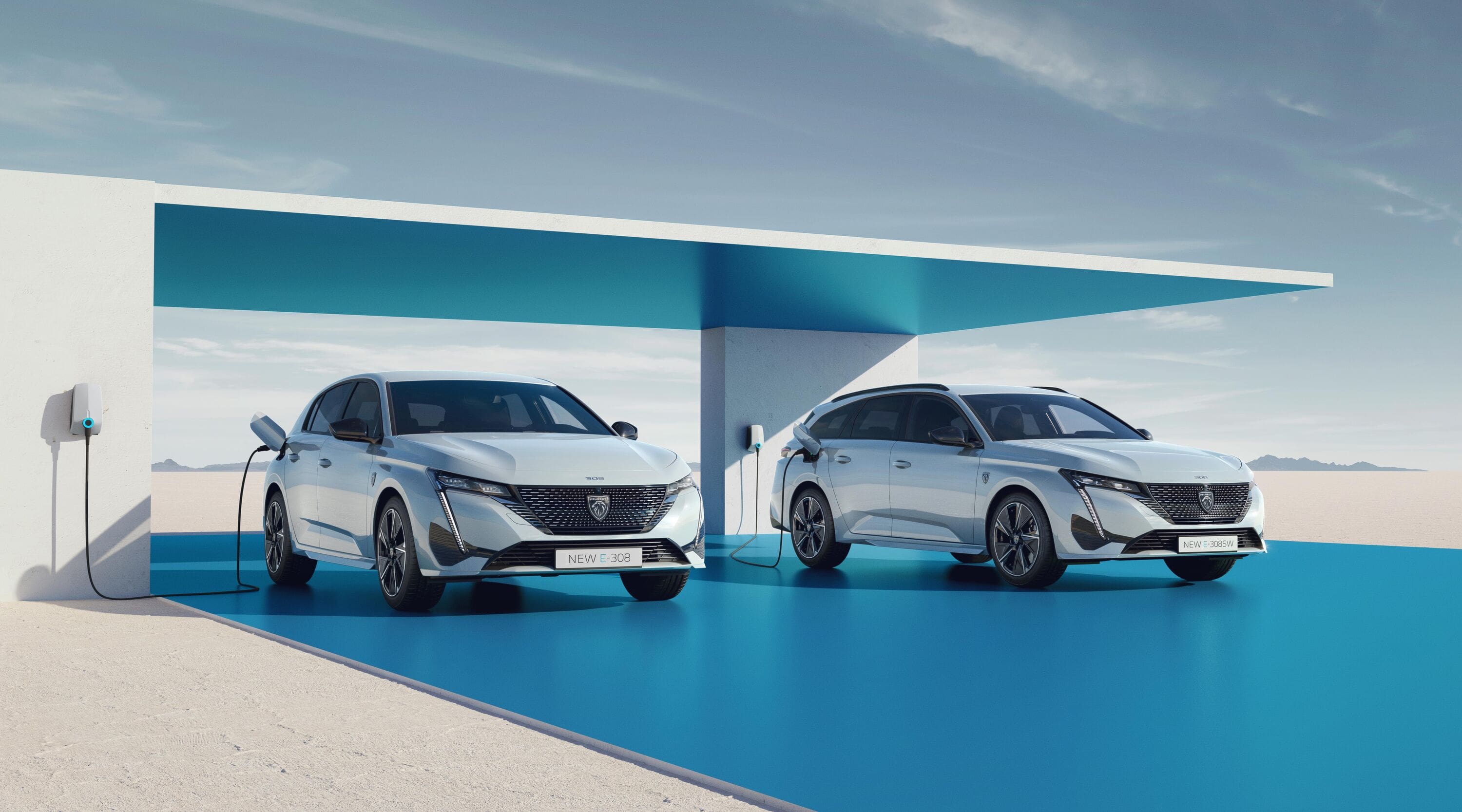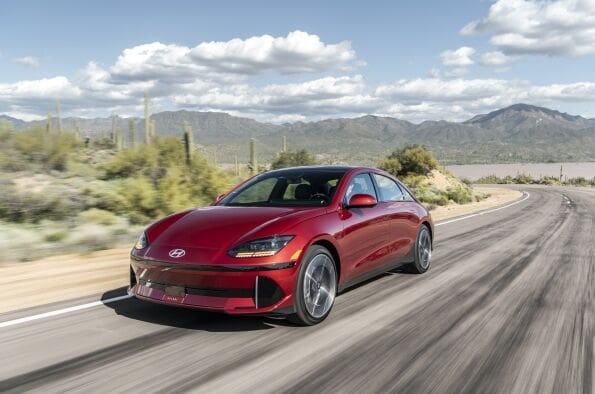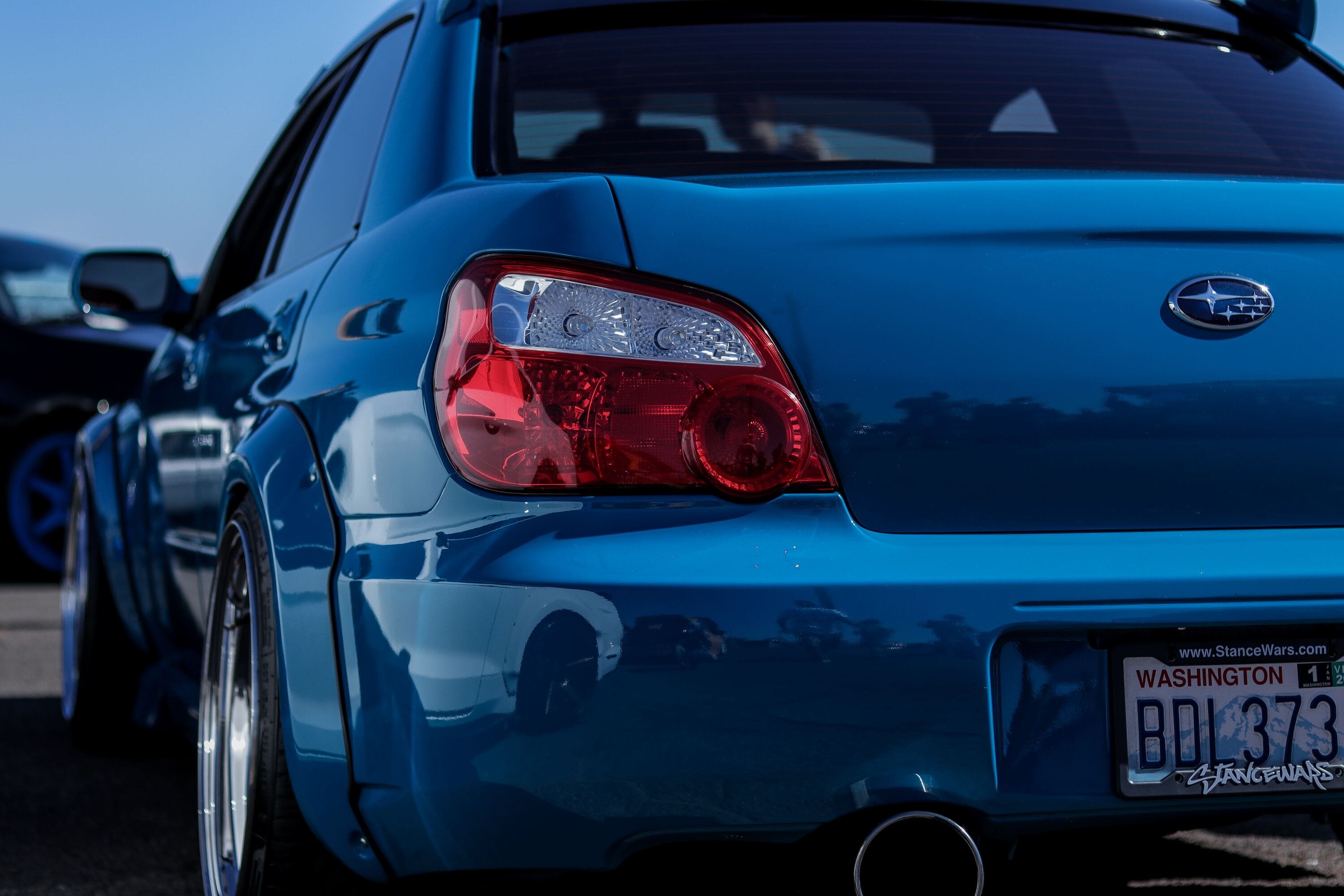Opel Astra Starting Price: TBC
Price as tested: TBC
GOOD STUFF
Comfortable and engaging drive, better interior quality than previously
BAD STUFF
Hybrid gets a smaller boot, diesel could be more refined
WHAT IS IT?
The Opel Astra is something of a household name in Ireland and has been a stalwart of the hatchback segment for many decades. Now Opel has an all-new Astra, and it is undoubtedly the most advanced model yet and one for the times as it comes with petrol, diesel and plug-in hybrid versions. A fully electric model is set to arrive in 2023, completing the full gamut of powertrain choices.
Initially, Opel will offer the Astra only as a five-door hatchback, but the German marque will follow this up with an estate model called the Sports Tourer. The Astra competes in a busy segment of the market against established names such as the Ford Focus, Renault Megane and Volkswagen Golf, as well as the Kia Ceed, Hyundai i30 and the Toyota Corolla.
HOW ABOUT THE LOOKS?
It may be an all-new design, but the overall size of the Astra isn’t very different. The biggest difference is a slight increase in wheelbase — the distance between the front and rear wheels — that mostly benefits passenger space in the back seats. While the styling has changed dramatically, with sharper lines and a distinctive ‘Vizor’ grille that incorporates slim LED lights, the Astra isn’t a polarising design that should give it broad appeal. Mid- and top-spec models also receive a contrasting black A-pillar and roof that adds to the Opel’s sophisticated design.
That nose may be the most distinctive element of the Astra but there are some tasteful flourishes of design throughout the car, including sculpted wings and a sharp crease running through the centre of the bonnet. At the rear Opel uses a thermoplastic material for the boot to help save a bit of weight and enable it to gain even better fitment for the rear LED lights. Their lighting design combined with the high-mounted third brake light create a compass-like image from behind.
The Astra name is spelled out across the back and the latch for the boot is integrated within the Opel logo. As standard the Astra runs on 16-inch alloy wheels and depending on specification grades, 17- and 18-inch wheels are also available.
WHAT IS THE INSIDE LIKE?
If Opel is trying to make this model an Astra for the digital age it has succeeded as it features an impressive looking dual-screen layout as part of the ‘Pure Panel’ dashboard. Comprising two 10-inch screens, the digital instrument display presents all the relevant information in a way that’s clear and easy to read at a glance. Opel’s new infotainment system is easier to navigate too and there’s both voice control and wireless smartphone mirroring available, all aimed at making life easier on the move.
Thankfully, it isn’t entirely digital inside and Opel has kept some physical buttons for key functions that can be done intuitively and without taking your eyes off the road. Two rows of controls below the central touchscreen allow for easy adjustment of temperature settings or to switch on the heated seats. Those front seats are something that Opel is proud of and has put a considerable effort into getting the design right. So much so that they get a stamp of approval from the German AGR Campaign for Healthier Backs.
Other pleasing details include an appreciably thin steering wheel that is an all-new design and feels great in your hands. Most of the rest of the materials employed throughout the cabin are to a reasonably high standard for the segment, the use of piano black surface for the top of the centre console which is very susceptible to scratches is the only thing we’d level some criticism at. A good-sized glovebox, decent door bins and extra storage under the front armrest make the Astra fairly practical inside too.
For those sitting in the rear there is a fairly good amount of space, and two adults will find it quite comfortable there. The seats are equally supportive, and the outer ones can be equipped with a heated function. When it comes to boot storage there is 422 litres available, which is an increase over the previous Astra. However, that figure does drop back down to 352 litres in the plug-in hybrid. There are 60:40 split-folding rear seats that can boost the overall capacity to 1,339- and 1,268 litres, respectively.
WHAT IS IT LIKE TO DRIVE?
Even though the new Astra shares many of the same underpinnings as the impressive Peugeot 308, Opel has put its own stamp on how it drives and handles. The choice of engine and gearbox also has a further impact on the driving experience but overall there is a noticeable level of refinement in how the Astra drives, in particular when it comes to cabin quietness.
Somewhat expectedly, the plug-in hybrid offers the most hushed driving experience and with a fully charged battery it is capable of covering as much as 74 kilometres in city driving, while the official WLTP figure is a healthy 60 kilometres. A 110hp electric motor provides sufficient performance and enables motorway cruising with ease. If, or when, the combustion engine is summoned, the 1.6-litre turbocharged four-cylinder works well and is generally smooth in how it comes in and out of play. The automatic gearbox delivers a solid performance too with consistently smooth shifts.
Due to having a little extra weight from the hybrid system, the Astra Hybrid-e does have a slightly softer ride than the other versions. So long as you’re not excessively hurrying it along through some demanding corners it is comfortable and provides good bump absorption and linear, predictable steering.
The suspension is a touch firmer in the petrol and diesel models but not to the extent that it affects comfort. Instead it enhances the handling, particularly in the corners where the Astra remains flat and imbues the driver with confidence. Despite no all-wheel drive models being available, the Opel seems very surefooted.
Opel may be something of an outlier in the segment by continuing to offer a diesel version but there are plenty that still need and desire the fuel economy such an engine can provide. In town driving the start-stop system can seem overly eager and the restart action needs further refinement, but once out on the motorway the engine is quiet, and the Astra comfortably cruises along.
Those sticking to more urban settings but unable to charge a plug-in hybrid will find the 130hp petrol engine a sweet little engine. The turbocharged three-cylinder has plenty of character and other than a slightly long throw from the gearbox it makes for a nice package in the Astra. The eight-speed automatic is nicer again and is well worth considering.
WHICH ONE SHOULD I BUY?
Opel’s plug-in hybrid Astra is by far the most refined and while it might end up having the higher starting price, could end up being one of the cheapest to run, assuming you maximise your battery charging. If you can’t get a home charger for whatever reason, then most people will be well served by the petrol engine as it provides reasonably good fuel economy and has good all-round performance.
IS IT SAFE?
The Opel Astra has not yet gone through the Euro NCAP safety tests, but we expect that when it does it should perform well. Opel isn’t shy about adding the relevant safety equipment to its cars and both the Corsa and Mokka scored four-star results in recent years.
Standard equipment includes LED headlights, and most models will feature lane departure warning, road sign recognition, automatic braking with pedestrian detection and cruise control with intelligent speed adaptation.
VERDICT:
The Opel Astra has been transformed, going from a mid-table player to one of the stars of the segment. A mix of attractive styling, interior improvement in quality and refinement and generally good driving characteristics mark this out as one to consider.
Spec Check:
Opel Astra Hybrid-e
Engine: 1.6-litre turbocharged four-cylinder petrol with 110hp electric motor with 12.4kWh lithium-ion battery
Power: 180PS
Torque: 360Nm
0-100km/h: 7.6 seconds
Fuel economy: 1.1 litres/100km
Top Speed: 235km/h
Transmission: eight-speed automatic
Co2: 24-26g/km
Annual Motor Tax: €140
Luggage Capacity: 352-litres with the seat up, which can extend out to 1,268-litres with the rear seats folded.
Price as tested: TBC
AA Ireland: Summer 2022 For more information: https://www.opel.ie





